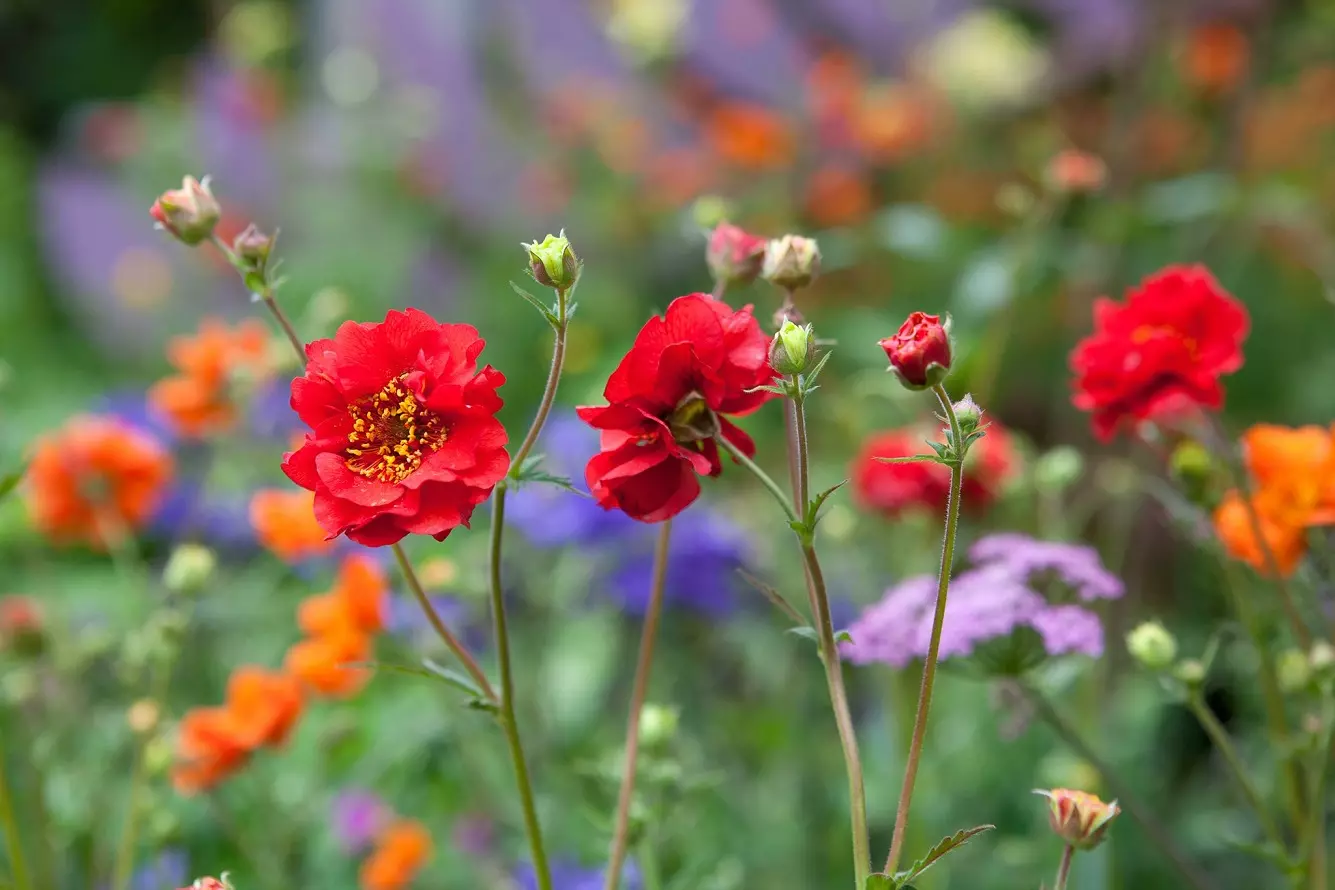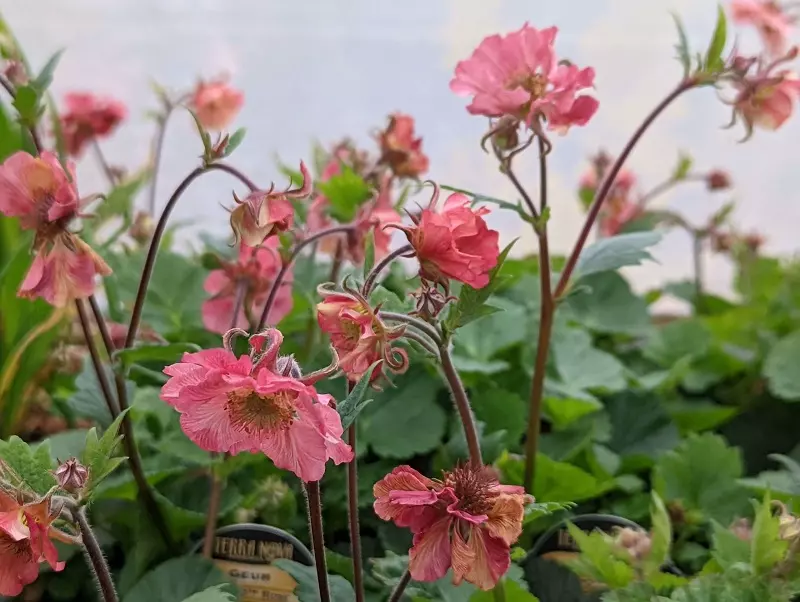La Benoîte - Variétés, Couleurs et Comment Prendre Soin des Fleurs de Geum
La Benoîte n'est pas une plante de jardin populaire, bien qu'elle mérite l'attention en raison de son aspect intéressant et d'une variété de cultivars différents. La plante est assez facile à cultiver et s'adapte à presque toutes les conditions. Grâce à cela, on la trouve souvent dans la nature. Voyez à quoi ressemblent les fleurs de la dryade, apprenez-en plus sur leurs caractéristiques et découvrez comment les soigner pour assurer une belle floraison.

La Benoîte - de quel type de plante s’agit-il et d’où vient-elle ?
La Benoîte (Geum) est une plante assez universelle - elle pousse aussi bien dans les régions froides que chaudes, ce qui fait qu’elle est répandue presque partout dans le monde. Il y a trois régions d’origine de la plante - situées assez loin les unes des autres. Il s’agit de l’Asie, de l’Amérique du Sud et de la Nouvelle-Zélande.
La Benoîte pousse naturellement dans les régions montagneuses, où elle se sent particulièrement bien. Il existe même une variété spéciale de ces plantes - le geum montanum, ou la benoîte des Alpes.

A quoi ressemble le geum ?
L’apparence des plantes de la Benoîte dépend principalement de leur variété. La plupart des plantes de ce groupe atteignent 40-50 cm (1,3-1,6 ft), mais certaines atteignent même 100 cm (3,3 ft).
Les fleurs de l’Avens sont les plus remarquables. Elles sont composées de cinq pétales et ont des couleurs différentes. Mais cela ne vaut que pour la variété de base. D’autres cultivars développent plus de pétales. De plus, elles peuvent être :
- rouge,
- orange,
- jaune,
- brun.
L’intérieur de chaque fleur contient de minuscules étamines de différentes nuances de jaune.

La Benoîte - les variétés les plus populaires
Bien que, selon les estimations, il existe plus de 50 variétés de geum différentes dans le monde, certains cultivars sont plus populaires que d’autres. Voici les meilleures variétés de geum :
- La Benoîte des bois (La Benoîte urbanum)
- La Benoîte rampante (La Benoîte reptans)
- Veilles du Chili (Geum coccineum)
- La Benoîte du Chili (La Benoîte chiloense).
Quel est le meilleur sol pour les plantes de la vigne ?
La Benoîte est très tolérante en ce qui concerne le sol dans lequel elle pousse. Mais si on lui fournit d’excellentes conditions, il fleurit mieux - même deux fois en une saison. Pour cela, veillez à ce que le sol soit meuble, modérément humide et moyennement riche. La fougère peut parfaitement pousser dans des sols sableux et limoneux. Il est important que le sol ne soit pas trop sec. Le niveau de pH peut être soit alcalin, soit acide.

Le meilleur emplacement pour les géums
Les géums préfèrent pousser dans des zones semi-ombragées. Ils se sentent bien en compagnie de plantes vivaces légèrement plus hautes. Portez une attention particulière à cet aspect, car la plante risque de se flétrir sous un soleil intense, et elle sera plus sujette à diverses maladies.
Comment planter les Benoîtes ?
Les semis de La Benoîte peuvent être achetés dans de nombreux magasins de jardinage - on ne devrait pas avoir de problèmes pour les trouver. Vous pouvez planter les geums directement dans un lit de fleurs. Faites attention à la profondeur des trous préparés pour la plante. Ils doivent être suffisamment grands pour contenir le vaste système de racines.
Lorsque vous plantez des géums, n’oubliez pas de respecter l’espacement entre les plants, car ils vont s’élargir. La croissance n’étant pas trop intense, des espaces de 25 à 30 cm devraient suffire.

Les géums nécessitent-ils des soins particuliers ?
Les géums ne sont pas des plantes très exigeantes, ce qui signifie qu’ils n’ont besoin de rien de spécial. Mais notez que si vous en prenez bien soin, ils fleuriront magnifiquement - même deux fois au cours d’une saison. Comment y parvenir ? Veillez à enlever les fleurs fanées une fois la floraison terminée. Grâce à cela, la plante a plus de force pour fleurir plus longtemps. De même, enlevez les feuilles mortes.
De quoi d’autre la Reine des prés a-t-elle besoin ? **Il faut la diviser tous les deux ans. La plante a besoin d’être divisée en plus petites touffes, ce qui améliore sa santé.
La Benoîte a-t-elle besoin d’engrais ?
La Benoîte fait partie des plantes qui n’ont pas besoin d’être fertilisées, et même qui ne le tolèrent pas. Vous pouvez utiliser un peu de compost naturel à ce stade, en veillant à ne pas en mettre trop.
Bien sûr, il peut arriver que l’état de la plante se dégrade, par exemple à cause des conditions climatiques ou de diverses maladies. Dans ce cas, vous pouvez faire une exception et nourrir la plante pour la rendre plus saine. Il n’existe pas de produits spéciaux à cet effet - utilisez plutôt des engrais universels.
La Benoîte est-elle résistante aux parasites et aux maladies ?
Les géums sont très appréciés des jardiniers. Ils sont très résistants - tant aux conditions climatiques (par exemple, le gel) qu’aux parasites Ils ne risquent pas de tomber malades. Parfois, les limaces ou les charançons de la vigne peuvent les menacer. Dans de rares cas, les pucerons se nourrissent également de leurs feuilles. Chacun des parasites mentionnés peut être éliminé à l’aide de produits spéciaux.

📍 Qu'est-ce que la Benoîte ??
La Benoîte est une plante vivace. C'est une plante de jardin très universelle et peu exigeante. La plante pousse partout dans le monde - il existe plus de 50 variétés de geums. Elle est tolérante à l'égard du sol, et selon le type, elle fleurit en jaune, orange, rouge ou brun.
📍 Quand les Benoîtes fleurissent-elles ?
La période de floraison des géums dépend de leur variété et des conditions dans lesquelles ils poussent. Généralement, elle a lieu entre mai et juin. Parfois, la plante refleurit à l'automne. Pour que cela se produise, veillez à étêter les fleurs lorsqu'elles ont fini de fleurir.
📍 Comment cultiver des géums ?
La Benoîte n'est pas compliquée à cultiver. La plante tolère les sols alcalins et acides, il est important que le sol soit modérément humide en permanence. L'emplacement de la plante doit être à mi-ombre. Les Benoîtes n'ont pas besoin d'être fertilisées.
📍 Combien coûtent les Benoîtes ?
Le prix des geums dépend de leur variété, ainsi que de l'endroit où vous achetez les semis. Les variétés les moins chères ne coûtent pas plus de quelques dollars. Les variétés les plus chères et uniques peuvent coûter plus de 20 euros.
Articles de fond




